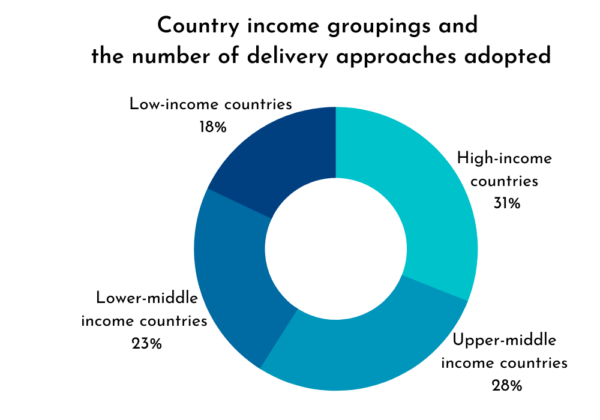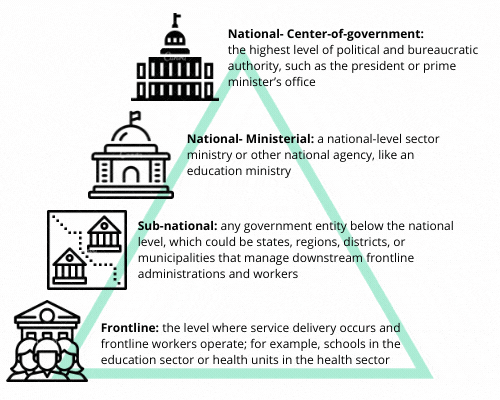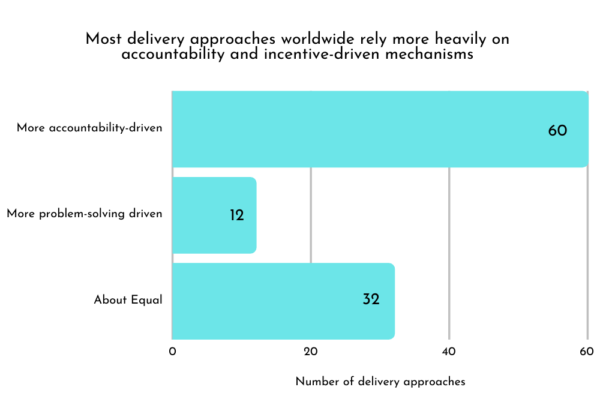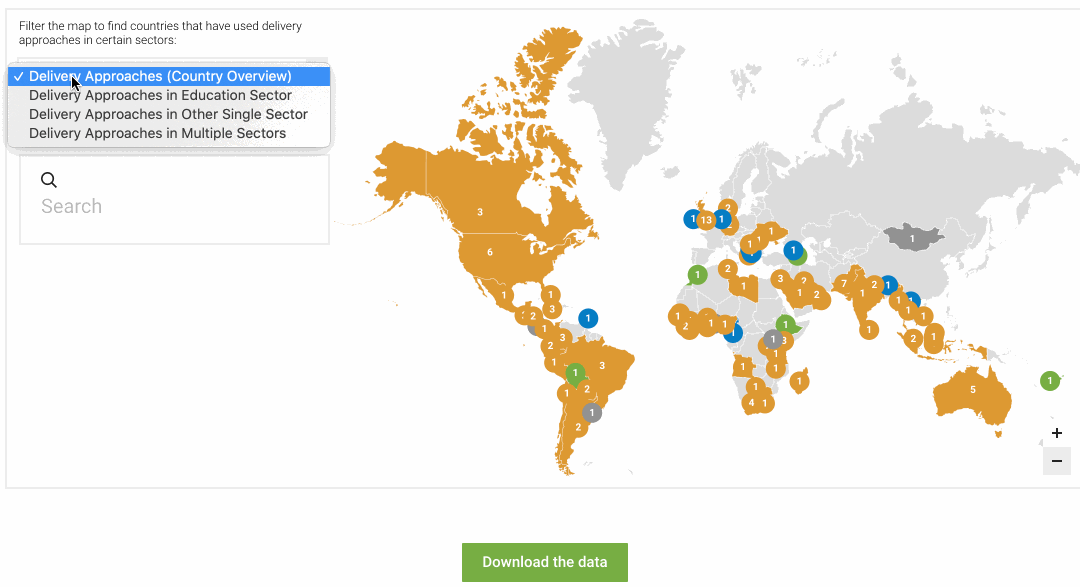by Charry Lee and Jessica Bergmann
Since 2010, there has been an accelerating trend in the adoption of delivery approaches[1] which seek to improve policy implementation and service delivery. However, little empirical evidence – especially from low- and middle-income countries – exists on the effectiveness of delivery approaches and what design choices and contextual factors contribute to their impact. As part of the DeliverEd Initiative’s ongoing research on delivery approaches in education, we undertook a systematic mapping of delivery approaches, including which countries have adopted delivery approaches, in what sectors, and with what types of design features.
Here are five key insights from our recent paper A Global Mapping of Delivery Approaches which presents detailed analysis on 152 instances of delivery approaches, 142 of which were structured as delivery units, used across 80 different countries.
1. Geographically, sub-Saharan Africa has the largest number of delivery approaches, followed by Latin America and the Caribbean.
Of all delivery approaches identified globally, the highest number of cases (27%) were found in sub-Saharan Africa. We identified 39 instances where delivery approaches were used across 21 countries. Several countries, including Ghana, Kenya, Liberia, Rwanda, Sierra Leone, and South Africa, have used delivery approaches on more than one occasion. The Latin American and Caribbean region has the second largest number of delivery approaches, with 29 delivery approaches used across 16 countries, representing 20% of the total number of delivery approaches identified globally. North America and the Middle East and North Africa (MENA) had the smallest number of delivery approaches in any region, each with only 9 cases identified. 
2. Delivery approaches are found across the country income spectrum.
Delivery approaches have been adopted in 40% of countries around the world. Our mapping identified that 31% of delivery approaches were adopted in high-income countries, compared to 18% of cases adopted in low-income countries. Our analysis, however, does not imply any correlation or causation of a country’s income classification and their likelihood of adopting a delivery approach, as the evidence we found only allows for descriptive analysis using publicly available documents. 
3. Most delivery approaches are established at the national level of government.
One of the key features of a delivery approach is the level of government at which it operates. DeliverEd identifies four levels of government at which a delivery approach can be based:  Unsurprisingly, most delivery approaches operate at the national level of government, either at the center-of-government or at the ministerial level, where the approach may more effectively manage cross-sectoral and multi-stakeholder coordination. Overall, 77% of the delivery approaches identified were established at the national level, with 47% of the delivery approaches at the center-of-government level and 30% at the ministerial level. Delivery approaches have typically been leveraged to signal political urgency for certain priority areas; therefore, a central level delivery approach is more likely to allow for closer proximity to the political sponsor. Only 23% of delivery approaches were at sub-national levels.
Unsurprisingly, most delivery approaches operate at the national level of government, either at the center-of-government or at the ministerial level, where the approach may more effectively manage cross-sectoral and multi-stakeholder coordination. Overall, 77% of the delivery approaches identified were established at the national level, with 47% of the delivery approaches at the center-of-government level and 30% at the ministerial level. Delivery approaches have typically been leveraged to signal political urgency for certain priority areas; therefore, a central level delivery approach is more likely to allow for closer proximity to the political sponsor. Only 23% of delivery approaches were at sub-national levels.
4. Most delivery approaches emphasize accountability and incentive-driven mechanisms.
Governments design delivery approaches that might perform several managerial functions, including: (1) setting targets; (2) measuring and monitoring these targets; (3) creating incentives and accountability for achieving these targets; (4) developing systems for collaboration and convening; and (5) signaling and prioritization. Sometimes referred to as a “top-down” approach, accountability and incentive-driven mechanisms rely more heavily on monitoring routines that involved regular updates on performance, signaling performance of various line ministries, and rewarding for performance. Most delivery approaches use both pathways to a certain extent. Our analysis shows that the majority of delivery approaches emphasize accountability and incentive-driven mechanisms (58% of cases). But just 11% of delivery approaches establish routines leaned more towards a “bottom-up” approach, which emphasize collaborative problem-solving and organizational learning, with practices like collaborative forums, deep-dive reviews, convenings for troubleshooting, etc. About one third (31% of cases) utilize both mechanisms at approximately equal measure. 
5. There is no single model for an effective delivery approach – they are diverse in their design and features.
The adoption of delivery approaches has accelerated in the last decade, with widespread use across countries and regions. Our analysis found numerous variations in the goals, structure, and functions of the delivery approaches used. The diversity of delivery approaches used makes it clear that designing a delivery approach can be complex and must be tailored to each country’s context and delivery goals. Even where there were patterns between the features of the delivery approaches and their contexts, many cases that did not conform to these patterns. DeliverEd’s research will investigate these delivery approaches further to understand how design choices and features influence the approach’s overall effectiveness.
DeliverEd’s global mapping is just the first step in exploring how delivery approaches have been used in the education sector and beyond. While this mapping aims to offer a comprehensive analysis, it relies on publicly available primary and secondary data, which means that it may not capture all delivery approaches used globally. Our interpretation of the design features of these delivery approaches comes directly from analysis of these published primary and secondary sources, such as websites, reports, and concept notes and may not include internal memos and concept notes often a part of a delivery approach’s inception.
But the real question we aim to address is whether and how delivery approaches work to improve education service delivery in low- and middle-income countries. While the paper A Global Mapping of Delivery Approaches is descriptive in nature, future research from the DeliverEd Initiative will investigate these questions through rigorous country-level case studies in Ghana, Tanzania, Pakistan, and Jordan.
[1] The earliest case was from as early as late 1990s but our mapping was limited to available online content.

